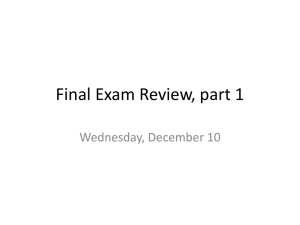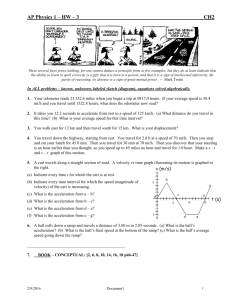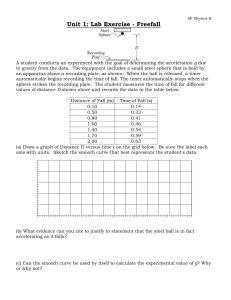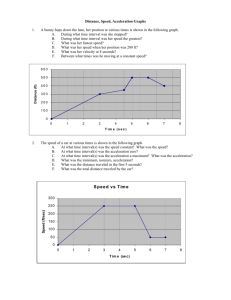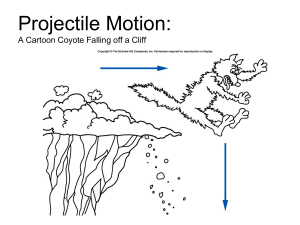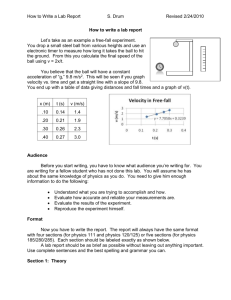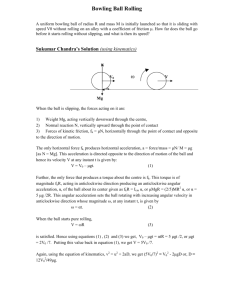Uniformly Accelerated Motion: a Free Falling Body
advertisement
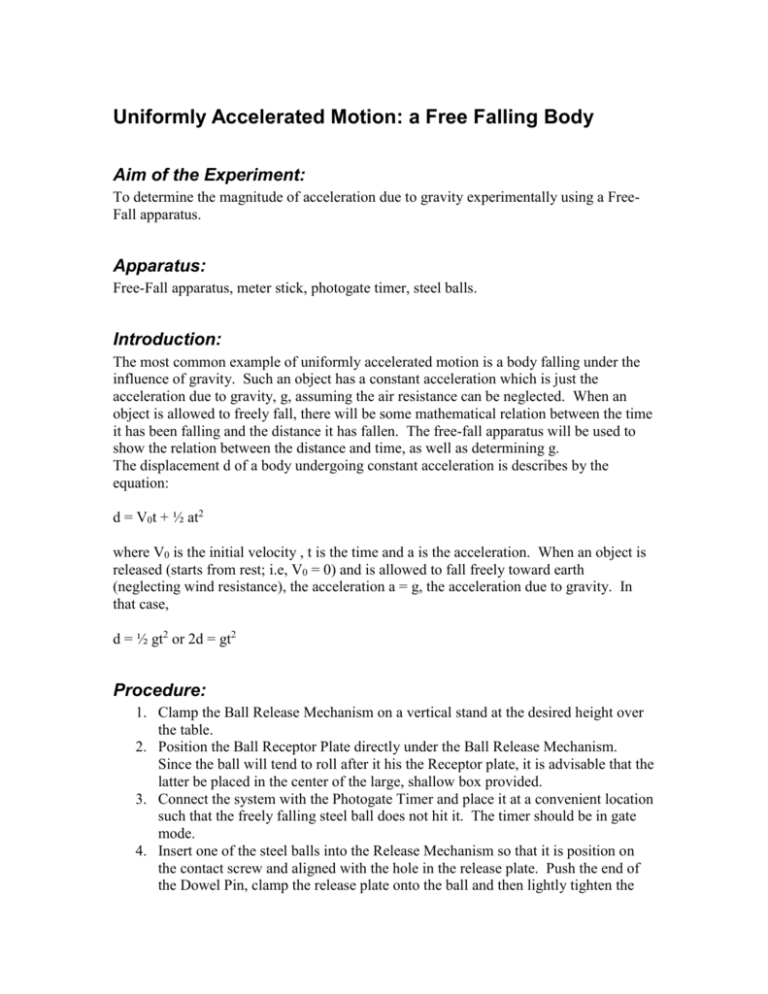
Uniformly Accelerated Motion: a Free Falling Body Aim of the Experiment: To determine the magnitude of acceleration due to gravity experimentally using a FreeFall apparatus. Apparatus: Free-Fall apparatus, meter stick, photogate timer, steel balls. Introduction: The most common example of uniformly accelerated motion is a body falling under the influence of gravity. Such an object has a constant acceleration which is just the acceleration due to gravity, g, assuming the air resistance can be neglected. When an object is allowed to freely fall, there will be some mathematical relation between the time it has been falling and the distance it has fallen. The free-fall apparatus will be used to show the relation between the distance and time, as well as determining g. The displacement d of a body undergoing constant acceleration is describes by the equation: d = V0t + ½ at2 where V0 is the initial velocity , t is the time and a is the acceleration. When an object is released (starts from rest; i.e, V0 = 0) and is allowed to fall freely toward earth (neglecting wind resistance), the acceleration a = g, the acceleration due to gravity. In that case, d = ½ gt2 or 2d = gt2 Procedure: 1. Clamp the Ball Release Mechanism on a vertical stand at the desired height over the table. 2. Position the Ball Receptor Plate directly under the Ball Release Mechanism. Since the ball will tend to roll after it his the Receptor plate, it is advisable that the latter be placed in the center of the large, shallow box provided. 3. Connect the system with the Photogate Timer and place it at a convenient location such that the freely falling steel ball does not hit it. The timer should be in gate mode. 4. Insert one of the steel balls into the Release Mechanism so that it is position on the contact screw and aligned with the hole in the release plate. Push the end of the Dowel Pin, clamp the release plate onto the ball and then lightly tighten the thumbscrew to lock the release. Do no over tighten the thumbscrew. By quickly turning the thumbscrew in the counter-clockwise direction, the ball should drop freely and hit the Receptor Plate. 5. Turn the timer on, press the RESET button, tap the receptor pad and allow the ball to fall freely on the receptor plate. First make test runs keeping the distance d, between the receptor plate and the release mechanism constant. Measure the time it takes for the ball to travel the distance d which should be fairly uniform. This will also ensure that the Receptor plate is directly under the Release Mechanism. Data: See Data pages. Results:
